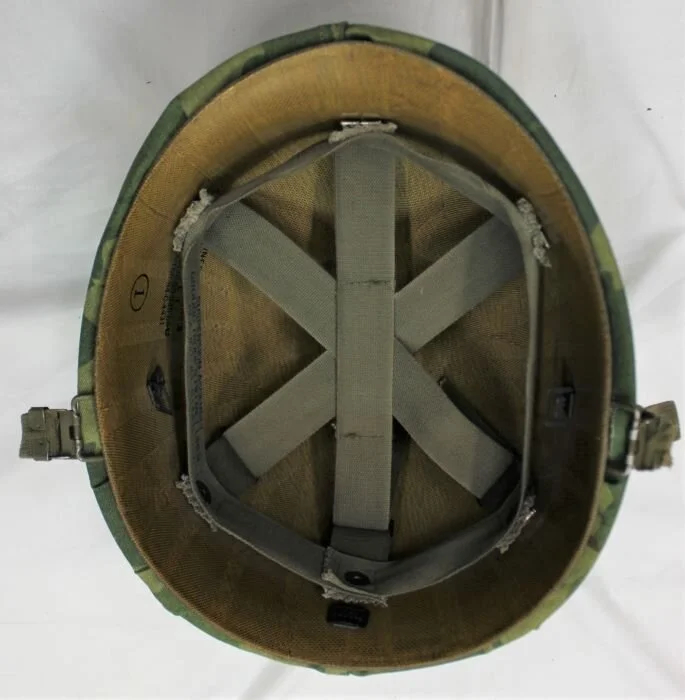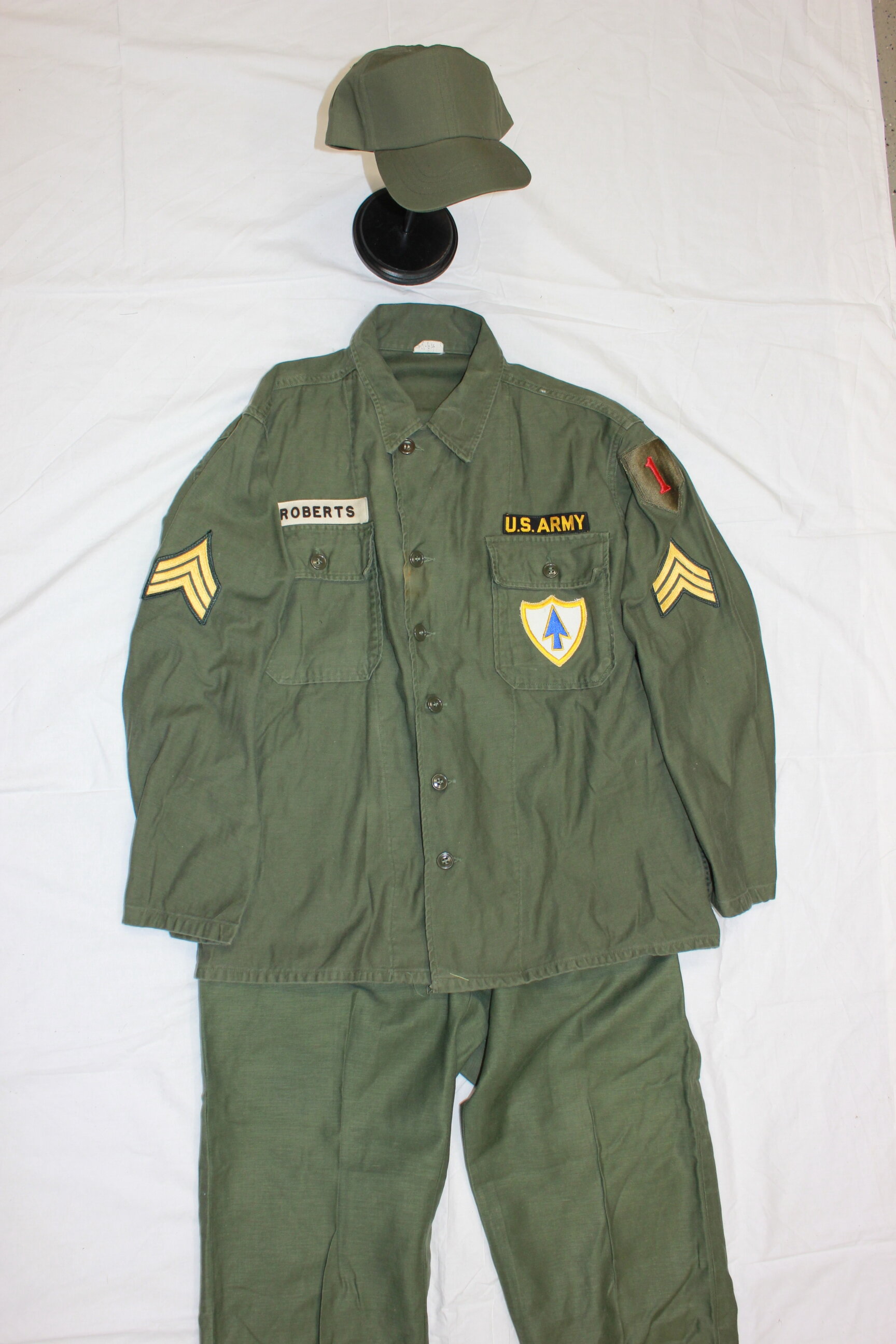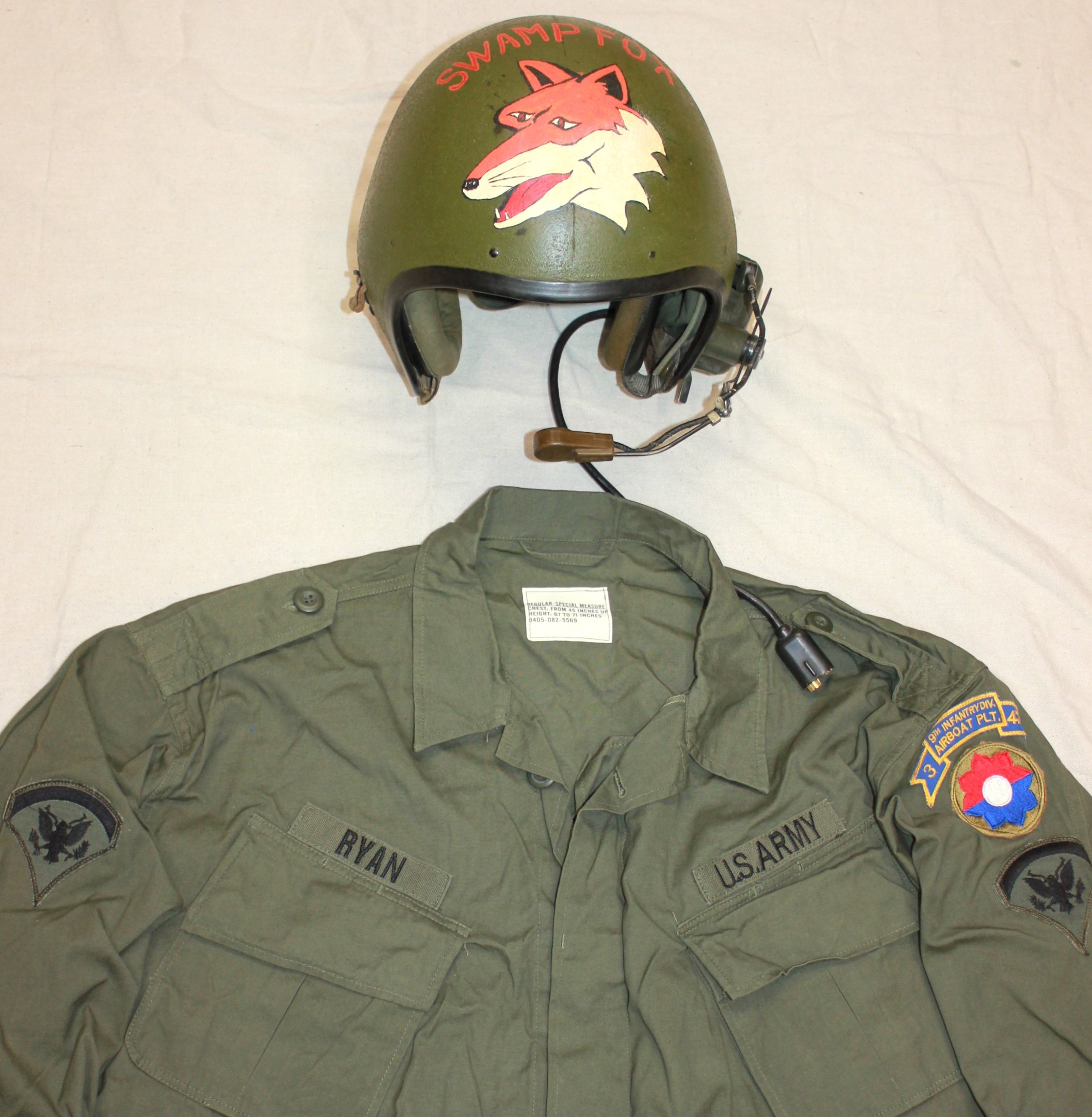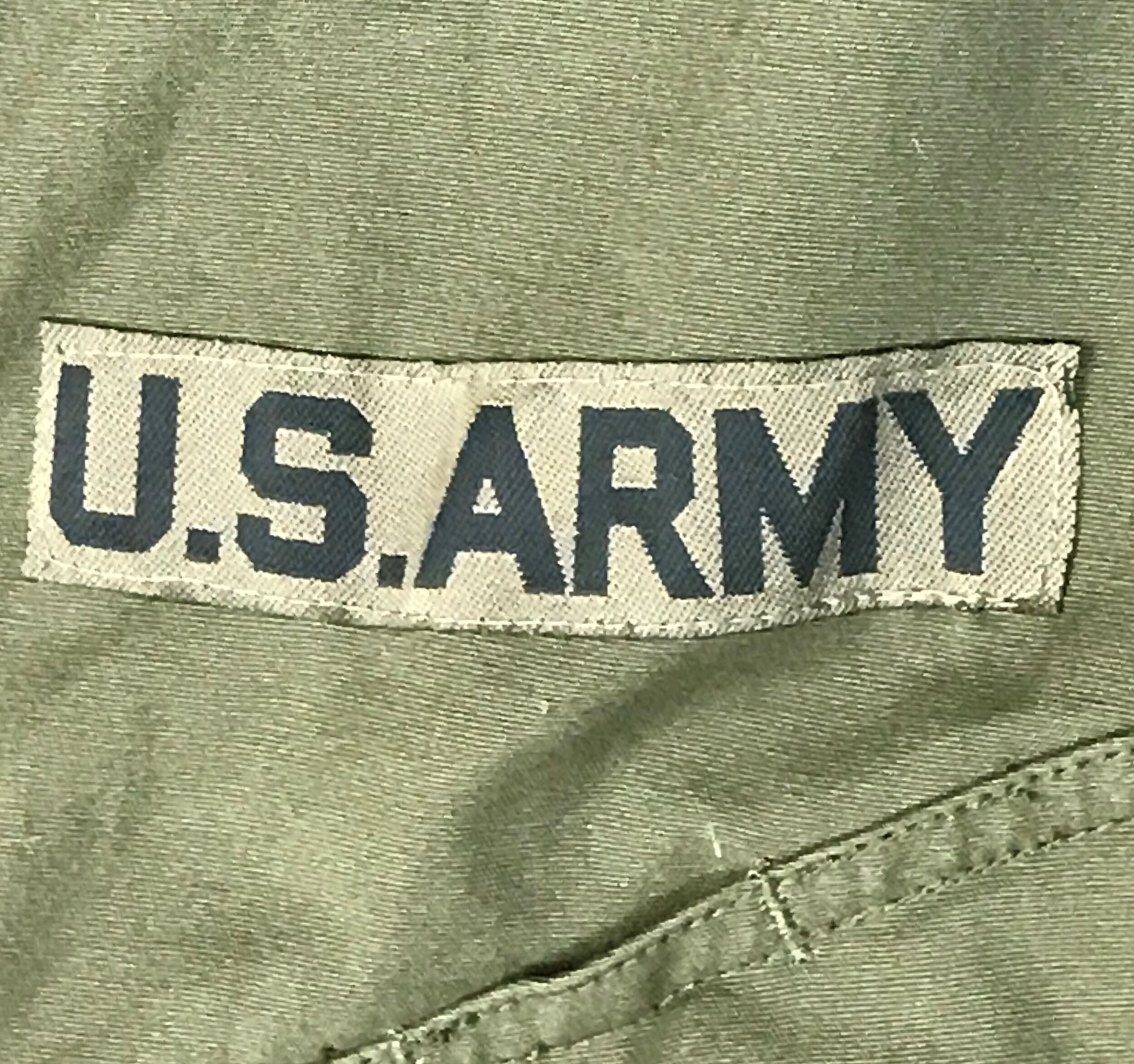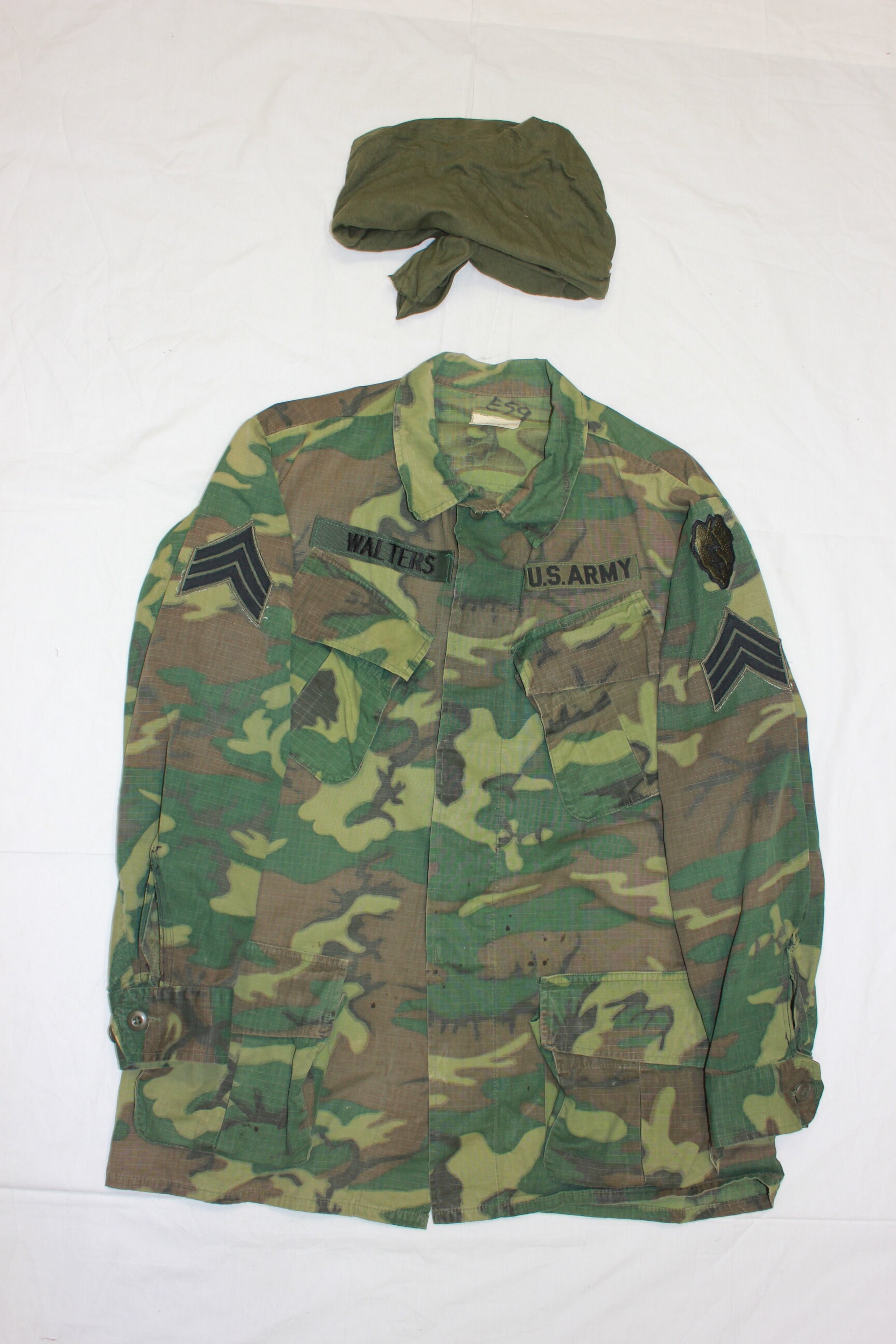Part #2, Army Infantry Soldier in Vietnam:
1st Infantry Division, 16 Infantry Regiment, 1965-66:
Well If you haven’t gathered the unit’s history from the Post WWII, “Occupation Duty” section yet, here’s a refresher.
The 1st Infantry Division was the only American combat force stationed in occupied Germany until 1950, Mor support began to be deployed to Germany as the Iron Curtain fell across Europe, and the “Cold War” enveloped the world. And they held the line against the Soviet / Eastern Block threat to Western Europe. The 1st Division was lucky in that they did not serve in the Korean War (1950-1953).
The 2 Battalion, 16th Infantry was serving as the occupation force in Germany, along with the French and English forces assigned there. Across the fence was the Soviet Union, controlling the entire “Eastern Block”. They held the line until called back stateside, to Fort Riley, Kansas where they were inactivated on 15 February 1957 and relieved from an assignment from the 1st Infantry Division. But the 1st Infantry Division stayed in Germany until 1955, then it was the first division rotated back to the United States in Operation Gyroscope. The division's new home would be at Fort Riley, in Kansas. It was stationed there for ten more years, while it was reorganized as a 'Pantomimic' division but then it was soon reorganized then a third brigade was added to the division, making its structure more like it was in World War II.
It was re-designated as Headquarters and Headquarters Company, '2nd Battle Group', 16th Infantry. On 1 October 1963, it was re-assigned to the 1st Infantry Division. The unit was activated at Fort Riley, Kansas with new organic elements, on 2 March 1964 as the 2nd Battalion, 16th Infantry.
After the Infantry Division had been reformed and upgraded, they were called to serve in the Republic of Vietnam in 1965. They were the first divisional unit deployed there, and the 2nd Brigade had the honors in July to lead the way.
Their area of operations was in the III Corps, and their mission was to engage the Viet Cong (VC) and regular North Vietnamese Army (NVA) forces in the jungles northwest of Saigon to the Cambodian border and defeat them. There were many battles that occurred, in many enemy controlled hot-spots, and all along the Highway 13 corridor, North-Northwest of Saigon on the road to An Loc.
During the enemy Tet Offensive of 1968, the 1st Infantry Division secured the Tan Son Nhut Airbase the primary hub for air operations within all of Vietnam. They served their Country proudly, and Honorably, and did what was called of them, many being decorated in the process, and many paying the ultimate price for our country, and theirs. When we did pull out of that quagmire, the division came home, and once again the unit was inactivated, on 19 August 1974, at Fort Riley, Kansas.
But it was then again activated on 1 May 1976 at Fort Riley, Kansas only to be once again, only to be activated on 21 September 1976 at Fort Riley, Kansas. Then on 16 December 1979 at Fort Riley, Kansas it was re-activated, Politicians just can't seem to keep us out of war. and the 2-16th Infantry would serve in Saudi Arabia, Kuwait, and Iraq. After 115 years of active service to the United States, the 2nd Battalion, 16th Infantry Regiment was inactivated at Fort Riley, Kansas on 10 April 1996.
It was been activated and re-designated on 1 October 2005 as the 2nd Battalion, 16th Infantry Regiment. On 16 January 16, 2006, the 2nd Brigade 16th Infantry Regiment was reactivated as was the rest of the 4th Brigade Combat Team, as part of the Army's transformation towards a modular force.
This soldier, Private First Class “TEBEAU” wears the standard Cold War fatigue jacket, without its liner, as was commonly seen in the USA, and with deployment to Vietnam, with the Big Red One’s full-color patch, and name tapes running back to Korean War times. It even carries on it the regimental crest, in pocket-patch form. The helmet has the Vietnam pattern camouflage on it. It does have subdued rank on the sleeves, possibly bought in-country.
Early on the fatigue was standard issuer, and he would have had the matching trousers, They were wet and cold in the winter, and heavy and hot in the summer, and with the jacket and flak-jacket over that and pack-un-bearable at times, and the jacket ditched or left at the base camp, or the sleeves cut off of sewn up-short. Black leather boots were being phased out, and jungle boots came on-seen, in various forms pretty quickly. There were a number of web gear types used during the Vietnam War, and several developed in the 1960s and 70s, but he would have had a form of the post-WWII kit.
1 Infantry Division, 26 Infantry Regiment, “Blue Spader’s Troop”:
OK, I’m going to make this long story, short, in the 20th century began in the United States, the Army was ill-equipped, to protect the country, let alone the rest of the world. Barely able to meet their overseas commitments in Cuba, the Philippines, and Puerto Rico. So as a result, Congress authorized five additional Regular Army infantry regiments: the 26th, 27th, 28th, 29th, and 30th Infantry in 1901.
Soon the 26th Infantry began deployed overseas, to the Philippines. For 20 years they served on deployments in the Southwest Pacific, Mexican territory, and the Indian frontier, and then went to Europe. The first battle streamer was for the Philippine-American War, and they had not even existed two years before. The operations of the Blue Spaders have been from near their inception, assigned to fight off Mexican bandits in settlement disputes, and patrolled the Indian Territories, successfully apparently, as they were selected with three other ”Regular Army” infantry regiments deemed ready for immediate combat duty, where they formed up the first American Expeditionary Division in June 1917. The “Expeditionary Division” was renamed the First Division and "Big Red One" was borne.
Then came the “Great War”, (WWI) no longer able to avoid the situation in Europe since 1914, The Americans were involved, and were deployed to France to fight the “Hun”. The Regiment was with the first Americans who went right to the front, to fight in the trenches. They would suffer there, with everyone else, in example, at Soissons, in the vicious fighting, they lost their regimental commander, executive officer, two of three battalion commanders, and their regimental sergeant major were all killed in action, sixty-two officers being casualties; in fact of the 3,100 Blue Spaders that started the attack, over 1,500 had been killed or wounded in it. They fought on, tell the battle was over, holding their ground for the Allies at a crucial period during the summer of 1918. Over 900 Blue Spaders lost their lives in six months. When the War ended, the Regiment had earned seven battle streamers for the Flag and received two foreign awards. Then assigned to occupation duty for a short while in Germany, but soon came home, to the United States, most troops were through with military life and left the Army, but a few tried to stay in the downsizing peacetime Army.
When the next war came in December of 1941, the Regiment had been preparing for war in Europe, with the rest of the division. They were assigned to the 1st Infantry Division in World War II. They were involved in the first-ever amphibious assault in North Africa and fought at the Kasserine Pass. Assaulted Sicily in another Amphibious Operation at the Battle of Gela, They were involved in the Normandy Invasion, entering Germany, and taking Aachen, crossed the Rhine, pushing on in constant combat, making it to Czechoslovakia by war's end. They had earned seven battle streamers, a Presidential Unit Citation, and five more foreign awards. Once again they served in occupation duty in Germany and went on to be called on to serve at the Nuremberg War Crimes Trials. In February 1963, the 2nd Battle Group, 26th Infantry was activated (with assets of the 1st Battle Group, 5th Infantry) & assigned to the 1st Infantry Division at Ft. Riley, Kansas. Then redeploying to Ft. Riley where it was inactivated in January 1964. Then things were getting active in the Republic of Vietnam, and a Communist threat was developing there. Soon they were reborn, again, and called to do the country’s bidding.
1st Infantry Division, “The Black Lions”, 1st Battalion (Red One Patch):
The division f1st Infantry Division would be called on to serve in the fight in Vietnam. Fighting to stop the spread of Communism into the South, calling themselves the Republic of Vietnam, they served there from 1965 to 1970. Then men served for about a year on average, then would rotate home, as opposed to WW2 where infantrymen’s tours were for the duration of the war! The Division arrived in July of 1965, and not waiting to climate or dig in, they were doing combat operations before the end of the second week in-country. Without getting into all the details, in the first year, the division had already participated in three major operations, The Hump, Bushmaster (1), and Bushmaster (II) and the soldiers had been hardened to the field, and the sting of combat.
1966, saw the division participate in Operations Marauder, Crimp, and Rolling Stone. Then Magor General Jonathan Seaman handed over command to Major-General William DePuy in March. In July took part in the battles at Ap Tau O, and the Minh Thanh Road, then, the division participated in the Attleboro Operation.
Note: prior 1st Cavalry “Battle Patch”, and CIB, from a prior tour on the fatigue shirt..
1st INF. DIV., (White Two) 2nd Brigade, 1966– 1967:
In 1967 the division stayed very busy, serving as part of the Ceder Falls, Junction City, Manhattan, Billings where they suffered 185 casualties at the Battle of Xom Bo II, and then came the Shenandoah II Operation, in October 1967 the 1st Division suffered heavy casualties again at the battle of Ong Thanh where 85 soldiers were killed in action. Then another Major General took over, John Hay took command in February.
This troop has had a prior tour serving with the 11th Armored Cavalry, he has the CIB as well, possibly from a different time than with the Cavalry., so infantry units would grab up fellows returning to Vietnam for their units right from the airport because knowledge saves lives, old dogs don’t like new tricks-but they know a lot of the old ones to look out for. He still wears no rank, Battlefield ranks can come fast, but not always. and any number of reasons got stuck, possibly even wounds, or just wanting to stick with his buddies.
1st Battalion, 1st Infantry Division (Red One), PFC, RVN:
The year 1968 saw the attacks on every major city in South Vietnam, all on the same day, it was the Tet Offensive and the Viet Cong, with heavy support from the NVA (Regular Army), and the Big Red One was assigned to secure Tan Son Nhut Air Base, which they did. In March Major General Keith Ware took command and became a main player in the Quyet Thang Operation (Resolve to Win). Then in April came Operation Toan Thang (Certain Victory). The General was killed in Action when his “Command Helicopter” was shot down by Anti-Aircraft fire during the Battle at Loc Ninh. So the Assistant Division Commander, Major General Orwin Talbott took over the Division.
They started 1969 off, with reconnaissance-in-force, and various ambush operations, including Operation Atlas Wedge involving several divisional-size forces. followed later by the Dong Tien (Progress Together) operations. To bolster the South Vietnamese (ARVN) in taking a more active role in combat operations. Our Government was trying to figure out how we might actually get out of the conflict, and give the war back to the South Vietnamese to handle (That’s why the Americans came though because they could not fight back effectively), Then in August, Major General Albert Milloy was given the command of the division. Leading the 1st Infantry Division soldiers in various battles along Thunder Road (Highway 13) fighting the elusive enemy through the end of the year.
1st Infantry Division, 2nd BN. (Green Two) Private:
The division’s involvement in this war ended in January 1970, and they went home back to Fort Riley. The Division departed Vietnam in April 1970, with commander Brigadier General John Q. Henion, when left Bien Hoa and headed to the United States. 11 members of the division would be awarded the Medal of Honor for their service in Vietnam The division lost 6,146 killed in action though, and 16,019 wounded. Some were listed as MIA’’s as no bodies were found, Twenty known to have been taken as prisoners of war.
Note: These jungle fatigues are a later version of the jacket, by then “Subdued” was the name of the game, and this version of the Black-Lions Patch is a Pocker hanger, oddly in the “subdued format”, they were pocket hangers so they could be removed generally. this could have been sewed on, perhaps he was on temporary duty with this Brigade.
1st Infantry Division, 26th Inf. Rgt. HQ. Leaving RVN with the Big Red One, “Khaki” Summer Dress uniform:
I call these khaki shirts, “The Going Home Uniform” as it was the one commonly worn home by Army Soldiers at the time. This Troop is going home now, he made it for over a year beating back the jungle, and a has lot happened, more than he knows, the world has changed, he likely was overjoyed, but full of emotions, and yet feels a bit emotional, he had made some great friends, seen people do incredible things, heroes and cowards, some men just-broke down, he’s lost some friends in horrific fire-fights, the boy’s crying for their Mom’s while medics did amazing work on them, most he never would see again, and never know what happened to them, they just would dis-appear, and be gone, he’s seen things no one should ever have to witness too, but he survived its tour, and with all his parts, was it luck of the draw, or was he just good at it, imagine this is when he started to reflect on his tour, the country he fought in, and fought for its freedom, his own country said it was his duty to go and fight in Vietnam he grew up, became a man, and he has to get it all sorted out in his head, and wondering just what “Being Home” will be like, has it changed, he knows he has changed. for now, though, he is in the hurry-up-and-wait mode, it must have been frustrating.
He would learn about the lingering PTSD, and the deadly effects of Agent Orange later, but for now, he is ok, he is reasonably safe, hell there is even a latrine that flushes! with real toilet pepper in it. He’s had a nice shower, been fed, written a few letters, and made the phone using the MARS Operator, provided by ham-radio operators to connect with their loved ones back home for a few minutes. His uniform is even dry-cleaned, starched, and pressed, and all his decorations are given to him, he looks like a million bucks, and a bit hollow at the same time, everything he’s known is about to change, and the anticipation of leaving, going home without the guys is overwhelming, he doesn’t remember anybody back at home, it seems so far away, he feels a bit alone and in limbo. Sitting and patiently waiting, with a big mix of other soldiers, all waiting for their spot on the freedom bird that will take them away from there and back to where they came from.
Note: the photo shows a troop from the 1st division, specifically the 26th Infantry Regiment, that may be sewed to the shirt (blouse), generally at this time, soldiers used pocket hanger patches as they awaited to DEROS back to the States, the World as it was referred too, more often than not, the unit you were assigned too, to fly home with was a completely different outfit altogether, it just to get out, and so the books said so unit records stayed correct, and who whats to fuss with all that sewing, some changing tags a couple times. When assigned to a more permanent location, they could sew on the new unit’s insignia.
2nd Leutnant, State-Side 1 ID, Class A Uniform:
This 1st Infantry Division uniform, is a Class-A Dress Uniform, during the Vietnam War, this was pretty much not seen in-country, it was exclusively a State-Side used uniform, in the Early 1960s, (We had people in Vietnam since the 1950s though) when khaki / Summer Dress uniforms were seen there early on, but the jacket had diss-appeared pretty quick, but the short sleeve shirt stayed as a summer use uniform till the end of the war. the 1950s introduced the “Green Uniform”, replacing the OD of WWII issue. The Class-A would be used as a semi-dress or “Barracks uniform, for in the office, dining out, official gatherings, or even semi-casual use. It would be worn in Winter and Summer, in the States the Khaki-Dress Uniform had been phased out, and the khaki shirt could be worn without the Green jacket when it was too hot out, but they used the green trousers.
This soldier’s last overseas deployment was with the 1st Signal Battalion, but he has 2, year-long tours under his belt, and on the first, he was a ground pounder and earned the Combat Infantryman Badge. He has earned the Good Conduct Medal, some achievement ribbons, he has been recognized for merit, and 5 Vietnam Service decorations. His collar brass shows he was commissioned an infantry officer, and has been in the Army his entire adult life so far, well into his fourth enlistment. By now he has a family and is sealed down to living on base, It is not bad duty, but the Army is getting a bit long in the tooth, behind a desk gets old fast, with the Vietnam War behind him now, he might have been starting to wonder where he may be deployed next, and pondering the fight to stay in the Army as they downsize again, or try the civilian world, and do the 8 hours a day grind, perhaps have his own gig, be a entrap enure? but what does he know other than ARMY, every soldier’s dilemma, after some time in the armed forces, like many jobs, is not really one you expect to stay your whole life doing, it’s a stepping stone, and the service to the country that’s important, life goes by fast and where do you want to be in 10 years, jumping into the civilian world will be expensive, and he’ll have to work his butt off to raise the family. We all go through it, some start earlier than others are tough, and life is short and creeps up on you. And this jacket found a hanger in the closit for a long time.
4th INF. DIV. (Airborne/Ranger), Colonel, 1968-69:
This example represents a later, jungle, subdued fatigues, and the Colonel, has been through the appropriate schools, Airborne and Ranger, Etc. with not “Prior Tour” shoulder patch on his right sleeve, its not cleat with what outfit it was, rather with the 4th as well or another, or how long or how many times, Miller is a fiction name tape, of course, most of mine are, I remember my auto-shop teacher had been in the 4th Infantry in Vietnam.
4th Infantry, Corporal Simmons:
The sergeant wears the metal pin-on rank insignia, a later war thing, before the ERDL camouflage was issued out, it was removable, which was the practice for all.
5th Infantry Div. RVN Fatigue:
When it was the time for the 1st Infantry Division to deploy to Vietnam after our government (LBJ) decided we needed to go there, so, in 1965 they needed more personnel, battalions of them were required so two infantry battalions, from the 2nd Brigade, 5th Infantry Division were relieved and then assigned to 1st Infantry Division. Then in September 1965, the 2nd Brigade, 5th Infantry Division itself was moved, (Without its Personnel) to Fort Carson in Colorado, where they re-formed. The rest of the various elements and people became the basis of the 196th Infantry Brigade.
By 1968 the division was stationed at Fort Carson, Colorado, as a mechanized formation. 1st Brigade, 5th Infantry Division deployed to Vietnam in response to the 1968 Tet Offensive, relieving a Marine Corps unit.
The Brigade was made of three battalions, 1 each of infantry, mechanized infantry, and armor, and they stayed there from July 1968 until 1971 they were operating on the DMZ De-Militarized Zone, a line on the map, that split Vietnam into the Communist-North and totally corrupted South, but there was a lot more to it than that, along the top edge of Quang Tri Province, where American Marines and Army Soldiers tried to keep the line true, and often used Naval Air, and US-Air Force, also supported by SVAF, because the whole area was contested, and infiltrated, covered by local forces, and the hardened NVA forces came down from the North.
The Border was a “Hot” place to be, there were enormous amounts of supplies completely bypassing the DMZ, as they could just go right around the American Forces there using Laos and Cambodia. And they did but they couldn’t have the Americans sit the comfortable-so they were constantly in battle, and patrol after patrol ambushed.
The Combat units consisted of the 1st Battalion, 11th Infantry; the 1st Battalion, 61st Infantry (Mechanized); 1st Battalion, 77th Armor; A Troop, 4th Squadron, 12th Cavalry; and 5th Battalion, 4th Artillery, A Co. 7th Engineer BN. But then on 22 August 1971, the 1st Brigade, 5th Infantry Division was inactivated at Fort Carson.
9th INF. Riverine Force:
9 INF. DIV. Taskforce 117 Trooper:
*9 INF. DIV., Air Boat:
*Re-shoot / This is all I have in the file. All of these Vietnam Soldier Uniforms here, had stories once, after the third time I had to rebuild the site, I also lost many of the pictures, and all the stories, I’ll replace them here at some point or hope to anyways.


















